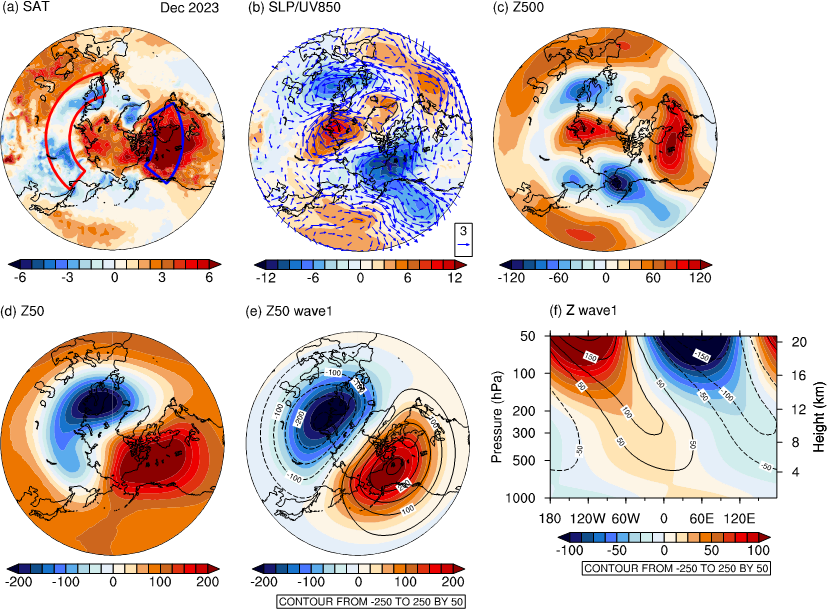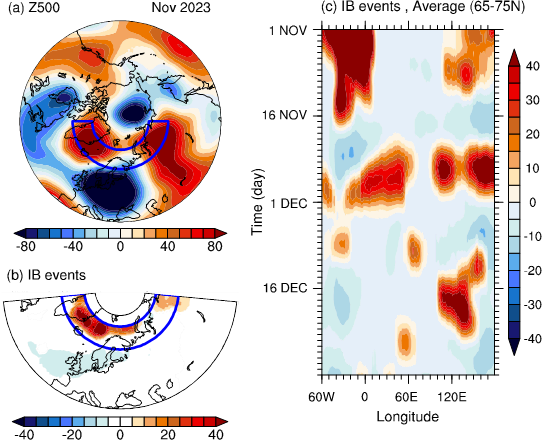2023年12月,北半球中高纬地区出现显著的温度“跷跷板”现象:欧亚大陆北部普遍偏冷,而北美地区则显著偏暖(图1)。以往研究表明,北半球中高纬温度异常的偶极型分布与同期大气环流变化(如西伯利亚高压)及下垫面强迫(如北极海冰)密切相关,但其前兆信号仍不明晰。

Figure 1. Anomalies of (a) SAT (°C), (b) SLP (shading; hPa) and UV850 (vectors; m s-1), (c) Z500 (m), (d) Z50 (m), (e) zonal wavenmmber-1 component of Z50 (shading; m) and (f) longitude-pressure section of the zonal wavenumber-1 component of geopotential height averaged over 45°N–75°N (shading; m) in December 2023, derived from ERA5, relative to the climatology of 1991–2020. (e–f) Anomalies in 2023 (shading) are compared with the climatology (contours).
基于再分析资料和耦合模式模拟结果,本研究揭示:11月格陵兰—欧亚区域的强阻塞活动(图2),是12月“欧亚偏冷—北美偏暖”异常的重要前兆信号。11月阻塞频次增加,有利于激发准定常行星波向上传播至平流层,削弱平流层极涡。该平流层异常响应持续至12月,表现为极涡明显偏向欧亚大陆,与增强的纬向行星波1波密切相关(图1)。行星波1波下传至对流层,使得欧亚大陆高压加强、阿拉斯加高脊减弱,有利于“欧亚偏冷、北美偏暖”的温度偶极型异常(图1)。
观测结果与两组数值模拟高度一致,进一步验证了前期对流层阻塞活动的关键作用。这一发现对于提高北半球中高纬温度偶极型异常的次季节预测能力提供了科学参考。

Figure 2. Anomalies of (a) Z500 (m) and (b) monthly-mean instantaneous blocking frequency (%) in November 2023, and (c) meridional-mean instantaneous blocking frequency (%) along 65°N–75°N evolving from 1 November to 31 December 2023, derived from ERA5, relative to the climatology of 1991–2020.
论文信息:
Xu, X., S. He, H. Wang, and J. Miao, 2025: “Colder North Eurasia, warmer North America” pattern in December 2023 and its blocking precursor. Atmospheric Research, 314, 107807.
